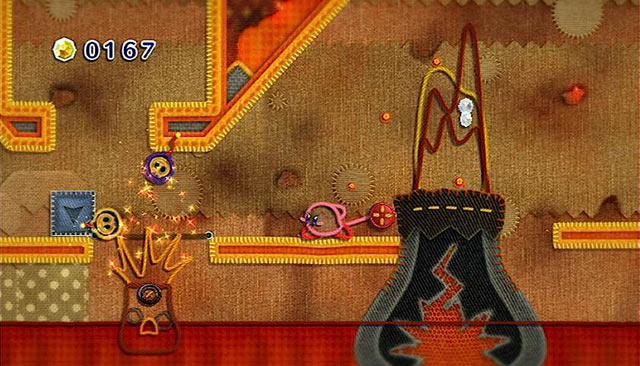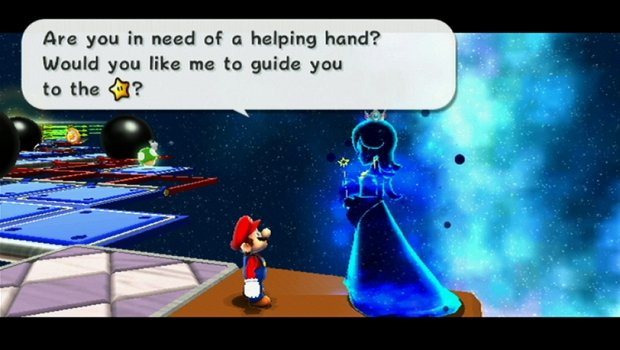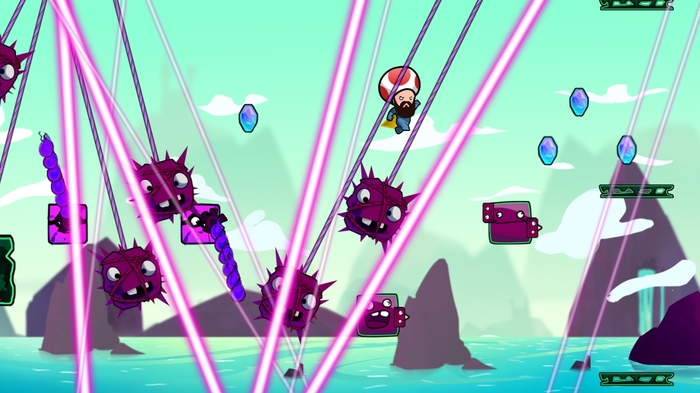An analysis of "hard" games and what should be done about them.
From a development perspective, adjusting a game’s difficulty can be, well, difficult. This is because when doing so there are a wide variety of factors that the developer must keep in mind. Firstly, recognizing the audience of your game even before its release is key; you do not want to gain a following only to alienate it due to your game being too hard or too easy. A developer must also consider his or her own personal bias; when testing your own game, you are already familiar with which obstacles to look out for and which strategies work best, because you were the one who designed it. This is where play testing is key – it allows players unfamiliar with the game to try it out for the first time.

Like what is this?!
Recently, I have been playing a fair share of games that happen to want to drive me up the wall. The first is Donkey Kong Country Returns 3D, which is and of itself a rather challenging game, despite what others may claim. That said, I have rarely died over a dozen times on any particular level, and I have played through most of the levels in the game. Compare that to a game like VVVVVV, in which I have easily died over five hundred times in the measly two hours that it took to beat that game – yet it is one of my favorite indie games of all time.
The other game I have been struggling a lot with recently is Giana Sisters: Twisted Dreams, which I wrote good things about not too long ago. What makes this game different from DKCR is that I did not begin to have trouble with it until the final four or five levels, where the difficulty suddenly spiked to unprecedented levels. Yet my pattern of play for this game resembles that of DKCR in that I rarely died over twenty times in any level. In both games, however, I felt the urge to turn off my game in between stages, because I knew if I were to go any further I would begin to completely lose my mind.
Are these games simply too hard for me? I honestly do not know, because these feelings can be replicated in games that most people would never consider to be “difficult.”

Easy enough to drive me insane.
Take, for example, Kirby’s Epic Yarn. No one in their right mind would call that game “difficult,” yet just like with DKCR and Giana Sisters, it makes me want to put a bullet through my foot. The fact that you cannot die in this game ironically makes it all the more frustrating, because every time I would fall into a pit, I would be punished not by losing a life, but losing a significant portion of my collectables, most of which I would not be able to retrieve again unless I restarted the level. This one simple mechanic drove me nuts, especially since Kirby seemed to never want to move in the way I wanted him to.
Come to think of it, all three of these games have one thing in common – they were all, in my opinion, difficult to control. In DKCR, Donkey Kong’s movements felt too clunky, and even after hours of playing through the game’s eight main worlds, I still could not come to grips with the way he moved – likely because I have been used to playing Mario games all my life. In Giana Sisters: Twisted Dreams, stringing together Giana’s many powers can feel at times cumbersome and unfair, and her movement feels very loose compared to most of the other platform games I have played. Kirby’s Epic Yarn is a game that I have been meaning to write about again since I had recently gone back and finished the whole thing to completion, so I will just keep it short and say constantly double-tapping on the directional pad gave me blisters on my fingers.
And so it seems that these games are not difficult per se, but rather difficult for me to control. As a gamer, I desire power over my game, and if I feel helpless, I cannot help but feel frustrated. Of course, there will be many people who will disagree with me, as all three of these games are universally loved (well, maybe not Giana Sisters). However, I have met several people who do feel the same way I do on at least one of these three games, and it shows that I am not alone in my opinion. So, is there a way to satisfy everybody?
Of course there is! Why not just add an easier mode for players who dislike difficulty?

No, shut up.
But wait – both DKCR and Giana Sisters do feature easier difficulty modes! DKCR calls it “New Mode” while Giana Sisters calls it “Easy.” That, however, is in and of itself a problem. Why would I choose “New Mode” when right under the option it says “Normal Mode?” I am a normal gamer, and I want to play the game the way it was meant to be played, not some watered down, handicapped version! Of course I am going to choose “Normal” over “Easy” or “New!” I have gamer cred to keep!
Perhaps what makes me angry the most is that developers use these tools – easy modes and super guides – as excuses to make their games more difficult than necessary...
This also brings me to another pet peeve of mine in video games. DKCR lets players activate what the game calls a “super guide,” which allows the computer to assist the player for a duration of the level, after Donkey Kong dies over eight times. This is something that is also found in games such as New Super Mario Bros. U and Kingdoms of Amalur: Reckoning; after dying a set number of times, the game gives players the option to make it easier. But I do not want to use a “super guide!” Why can I not turn that damn thing off? Besides, most of the time it is not even that the level I am on is too difficult, but rather I am trying to find a hard-to-reach collectable that happens to be located in a very hazardous area! Why do you shame me so, game?
Perhaps what makes me angry the most is that developers use these tools – easy modes and super guides – as excuses to make their games more difficult than necessary, which often boils down to poor level design or poor control. In my opinion, it comes across as lazy and intrusive; a well-designed game should not require either of these two things. I understand the desire to make games more accessible, but there are certainly better ways to this than applying condescending tools as easy modes and super guides. At the very least, make “normal mode” easier and layer on the difficulty from there.

I know this may come off as a mindless rant, but I do honestly feel this is an issue that has become more and more prevalent in today’s post-Dark Souls world. How many times have you heard a game advertised as “difficult,” only to find out that all they did was make the game ludicrously unplayable? Oftentimes, these games are nothing more than terrible controls slapped onto poorly designed levels. Another trend that I absolutely detest in video games is the use of kill rooms. It is one of the reasons why I wrote about my distaste towards Guacamelee a few weeks ago, and other games like Darksiders are equally guilty of it. All of these things feel like lazy ways to make a game “harder” without the need to be creative.
Maybe I am an exception, but this is probably why I love playing Kirby games so much (Kirby’s Epic Yarn notwithstanding, of course). They are neither difficult nor challenging, but rather playful and purposefully simplistic. They embody what I love most about video games – they make me happy, joy-filled romps through world after world without me having to worry or care. Of course, that exact reason is why many people dislike the franchise, but I digress.
There are certainly ways to do difficulty correctly. Games like Super Meat Boy and VVVVVV are an absolute joy, because not only do they control well, but because they ramp up the difficulty in such a way that feels fair. Even Cloudberry Kingdom, a game that advertises itself as a maniacally difficult platformer, creates an open environment that caters specifically to each gamer’s play style. These games are all classified as “difficult” games, yet I have enjoyed them for more than most other games on the market, even those that are widely seen as less difficult. And all of these games have one thing in common – I feel in control. When I die, I feel responsible. I never feel like I am fighting against the game itself or its creator. I never felt physically incapable of completing a level. Most importantly, I felt like I was having fun.

Chaotic, but certainly feasible and undoubtedly fun.
From a development perspective, adjusting a game’s difficulty can be, well, difficult. But if you do need to make adjustments to the game’s difficulty, do not just throw in easy modes and super guides. Put some effort into it, and do the game right.
What is your take on difficulty in games? Do you like easy modes and super guides? Have any games driven you up the wall with their difficulty? Leave your thoughts in the comments below!
![Amazing Spider-Man Finale Features New [SPOILER] Costume](../../../../../../assets1.ignimgs.com/2018/06/01/untitled-br-1527892808294_small.jpg)